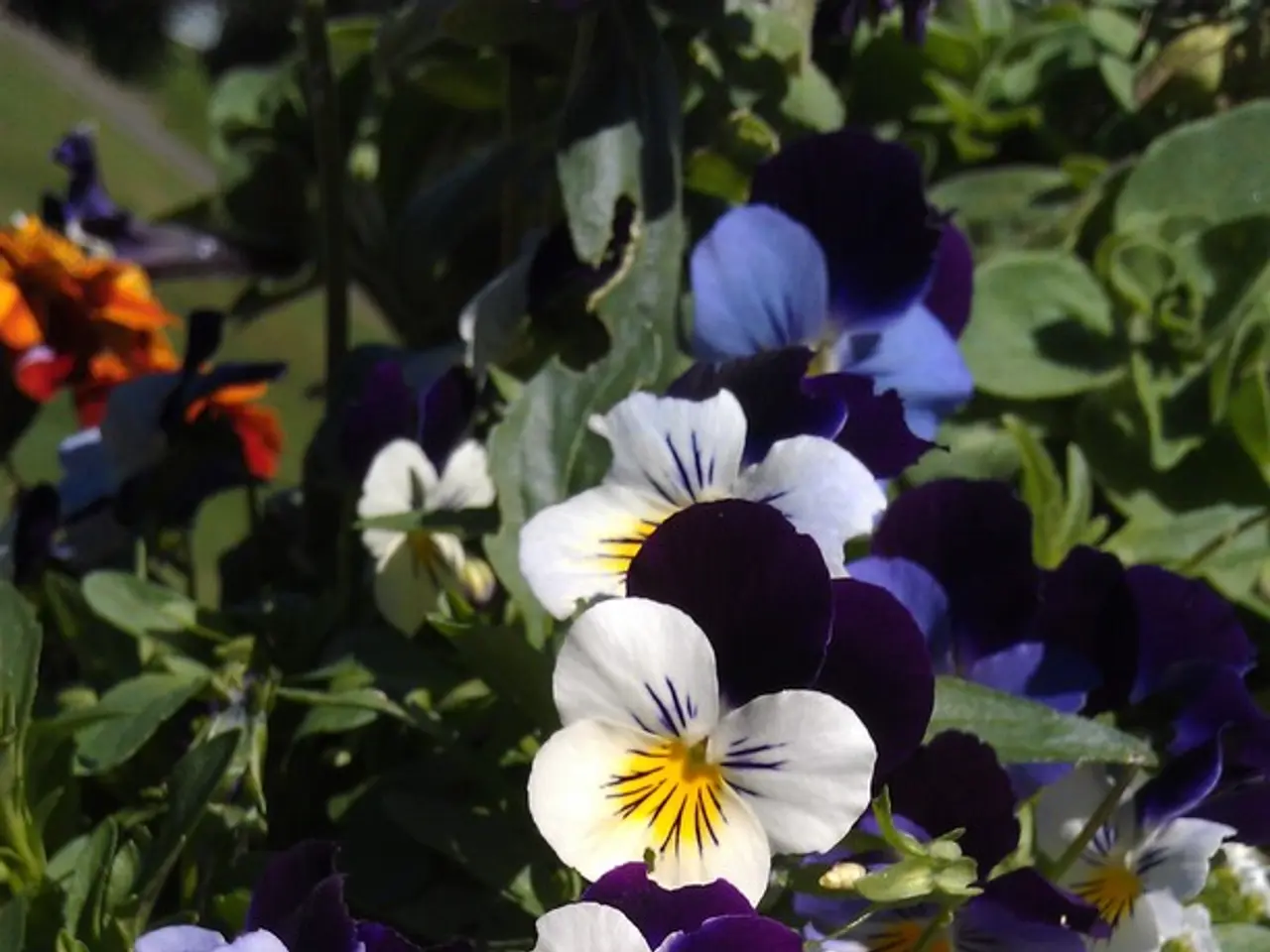Deadheading 18 Specific Plants Is Advised Against by Experts
In the world of gardening, deadheading—the practice of removing spent flowers—is a common technique to prolong a flower's bloom and maintain a neat appearance. However, not all flowers benefit from this practice. Some species naturally discard spent blooms or reseed for free, saving effort and ensuring rebloom.
For instance, Chia plants produce continuous small purple blooms along their stems. Removing them prematurely stops the cycle and frustrates both the plant and pollinators. Similarly, indeterminate bloomers like Borage offer a non-stop array of star-shaped blue blossoms. Removing flowering tips can abruptly end their flower show.
On the other hand, some flowers should not be deadheaded because they are grown specifically for their seed heads or decorative seedpods. Examples include poppy, allium, crocosmia, eryngium, echinops, luneria, nigella, daylilies, irises, and roses (for rose hips). Leaving these flowers alone provides year-round interest and benefits such as attracting wildlife or supplying materials for crafts.
Russian Sage, with its silvery foliage and lavender-blue flowers, is another example. Cutting it during bloom robs pollinators and the garden's soft silhouette. The same goes for Helenium, whose daisy-like blooms bloom mid-to-late summer into fall. Their seedheads feed birds, and their ongoing blooms support pollinators, so it's best not to remove them too soon.
Common Sunflowers (Helianthus annuus) are a source of important bird food. Deadheading them stops seed development and limits feeding opportunities. Yarrow's flat-top blooms last indefinitely and become seed heads that birds enjoy later. Full removal stops seed set and limits wildlife attraction.
Goldenrod's tall plumes feed bees in late summer and birds through fall. Deadheading stifles its ecological role and seasonal interest. Coneflowers are extraordinary for both beauty and wildlife value, as spent blooms form seedheads rich in nutrients for birds.
However, there are exceptions. Asters create a vital late-season nectar source. Cutting them in June kills both benefits for bees and birds. Lupine is beloved by bees and butterflies, particularly when its seedpods form. Cutting blooms early prevents natural reseeding. Columbines are natural reseeders, and removing a flower means losing the chance at next season's blooms.
Trailing Petunia/Supertunia are "self-cleaning," meaning spent flowers drop on their own and don't need your TLC. Lion's Tail boasts seasonal tubular blooms for hummingbirds and bees, and destroying the spike halts all further flowering.
In contrast, deadheading is useful for many other flowers to promote longer blooming by preventing seed formation. But for the plants listed above, leaving spent blooms to mature into seeds or hips enhances garden aesthetics and ecological value. By selectively trimming only when form or safety requires it, and always letting nature set the pace, we can create an ecosystem that supports wildlife, conserves labor, and elevates our gardens' natural rhythm.
[1] Source: Gardening Know How (2021). Why You Shouldn't Deadhead Some Flowers [3] Source: The Spruce (2021). Why Some Flowers Should Not Be Deadheaded
- Chia plants and indeterminate bloomers like Borage should not have their flowers removed prematurely, as it stops the blooming cycle and frustrates pollinators.
- Poppy, allium, crocosmia, eryngium, echinops, luneria, nigella, daylilies, irises, roses (for rose hips), Russian Sage, and Helenium are better left alone, as they offer year-round interest and benefits such as attracting wildlife or supplying materials for crafts.
- Common Sunflowers, Yarrow, Goldenrod, Coneflowers, and Asters are exceptions to deadheading, as they provide important food sources for birds and stifle their ecological role when deadheaded.
- Trailing Petunia/Supertunia are self-cleaning, meaning they drop spent flowers without needing assistance, while Lion's Tail is valuable for hummingbirds and bees, and removing its spike halts all further flowering.
- Instead of deadheading continuously, selectively trimming only when form or safety requires it and letting nature set the pace can create an ecosystem that supports wildlife, conserves labor, and enhances garden aesthetics.
- Some species, like Chia plants and indeterminate bloomers, naturally reseed for free, saving effort and ensuring they rebloom.
- Deadheading not only prolongs a flower's bloom and maintains a neat appearance but also plays a role in conserving labor and elevating the garden's natural rhythm when applied judiciously.





